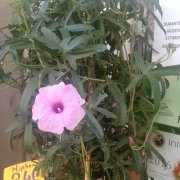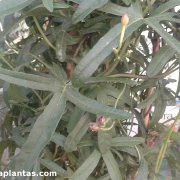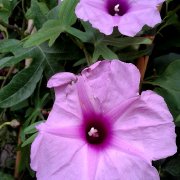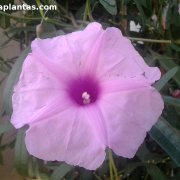Care of the climbing plant Ipomoea cairica or Coast morning glory |
|
The genus Ipomoea, family Convolvulaceae, comprises 300 species of climbing plants native to America and Africa. Some species are: Ipomoea cairica, Ipomaea alba, Ipomoea tricolor, Ipomoea purpurea, Ipomoea acuminata, Ipomoea lobata, Ipomoea indica, Ipomoea hederacea, Ipomoea coccinea. Common names: Cairo morning glory, Coast morning glory, Messina creeper, Railroad creeper. This species is native to Africa. They are creeping or climbing plants that reach 5 meters (16.4 feet) in length. The leaves (up to 9 cm/3.54" in diameter) are light green and palmate-shaped with 5 lobes with wavy margins. They produce abundant funnel-shaped flowers that are lilac, pink or purple with a dark center. They can bloom almost all year round, especially in tropical and subtropical climates. These fast growing plants are used to cover slopes, walls, columns and pergolas and in pots for decks, patios and balconies. Ipomoea cairica needs full sun exposure and warm temperatures. It resists occasional frosts but lose its leaves; the winter safety temperature is 5 ºC (41 ºF). Coast morning glory can grow in any well-drained soil: rocky, sandy, or poor. Water regularly to prevent the substrate from drying out completely; never flood. Fertilize in spring and summer with mineral fertilizer. Prune in late winter to control growth because it can be invasive. Ipomoea cairica is an easy to grow plant and resistant to pests and diseases. Railroad creeper propagates from seeds; scrape the seeds with sandpaper and soak for 48 hours before sowing in a sandy and damp substrate. It also propagates by cuttings in summer. |
Images of the climbing plant Ipomoea cairica or Coast morning glory |
Find plants
Ipomoea cairica or Coast morning glory | Care and Growing
© 2025 FavThemes



